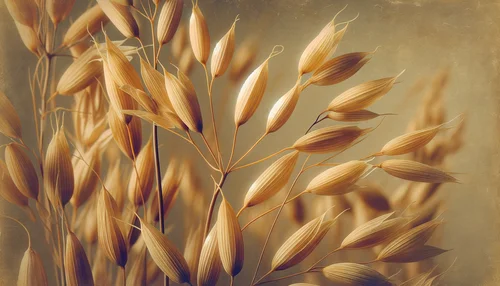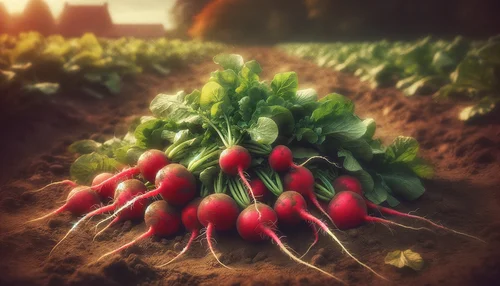So, why grow a cover crop? Picture this: a lush, thriving garden that not only captures the eye but also nurtures the very essence of your gardening dreams. In the ever-evolving world of gardening, understanding the importance of cover crops isn’t just a piece of the puzzle – it’s the master key to unlocking a myriad of benefits for your cherished green space. Join us on this exploration as we unveil the positive impacts that cover crops can have on the overall health of your garden.
Take the first step on the journey towards sustainable gardening by adopting a holistic approach. Discover the interconnectedness of environmental benefits that cover crops bring to the table, shaping a garden that thrives in harmony with nature. By understanding and incorporating these interconnected points, a holistic approach to cover crops can create a self-sustaining and resilient garden ecosystem.
Understanding Cover Crops: Green Guardians for Your Garden
In the dynamic world of gardening, cover crops emerge as silent yet powerful allies in nurturing your green haven. But what exactly are cover crops? Think of them as nature’s caretakers for your soil during the periods between your main crops. Instead of leaving your garden beds bare after harvesting, cover crops step in to safeguard the soil, offering a myriad of benefits.
These are usually quick-growing plants, such as legumes or grasses, intentionally sown to cover the ground. Their primary role is to shield the soil from erosion, suppress weeds, and contribute essential organic matter. As these green companions mature, they create a protective blanket over the soil, preventing nutrient leaching and enhancing overall soil health. Cover crops are not harvested for consumption; instead, they’re incorporated back into the soil, enriching it with nutrients and promoting a flourishing ecosystem. Whether it’s clover fixing nitrogen, rye preventing erosion, or vetch enhancing soil structure, cover crops play a vital role in maintaining the vitality of your garden, providing a sustainable and natural solution for year-round soil care.
- Crimson Clover

- Merchant:High Mowing Organic Seeds
- Winter Rye

- Merchant:High Mowing Organic Seeds
- White Clover

- Merchant:High Mowing Organic Seeds
- Tilling Radish

- Merchant:High Mowing Organic Seeds
- Oats

- Merchant:High Mowing Organic Seeds
"Here's a little transparency: Our website contains affiliate links. This means we may receive a small commission if you click and make a purchase. Don't worry; there's no extra cost for you. It's a simple way you can support our mission to bring you quality content."
Soil Health Enhancement
Cover crops are the unsung heroes of soil rejuvenation, enhancing soil structure and nutrient content. They play a crucial role in cycling and recycling nutrients, promoting a balanced nutrient profile. As these green guardians decompose, they contribute organic matter to the soil, improving its structure, water retention, and microbial activity.
Understanding and strategically incorporating cover crops that align with these nutrient cycles can maximize their positive impact on soil fertility and garden productivity. Each cycle contributes to creating a balanced and nutrient-rich environment for your plants to thrive.
Carbon Sequestering and Organic Matter Addition
Carbon sequestering, one of the cycles, is nature's way of storing carbon dioxide to maintain a balanced and healthier environment. Imagine your garden as a bustling community of plants and soil. As plants grow, they naturally absorb carbon dioxide from the air during photosynthesis, converting it into organic matter. This organic matter is then stored in the soil, acting as a carbon sink. Essentially, it's the Earth's way of managing the carbon cycle, ensuring that excess carbon dioxide, a greenhouse gas contributing to climate change, is stored rather than released into the atmosphere. By incorporating practices like planting cover crops, which contribute to carbon sequestration, we actively participate in this natural process, reducing our carbon footprint and promoting a more sustainable and climate-friendly ecosystem.
Nitrogen Fixation
Legume cover crops, including clover and vetch, team up with nitrogen-fixing bacteria in their root nodules, converting atmospheric nitrogen into a plant-usable form. Upon decomposition, these cover crops enrich the soil with nitrogen, providing a natural boost for subsequent crops.
Phosphorus Cycling
Brassica cover crops, exemplified by mustard and oilseed radish, play a vital role in phosphorus cycling. By mobilizing phosphorus in the soil and preventing leaching with their deep root systems, these cover crops enhance nutrient availability for future plantings.
Potassium Accumulation
Certain legume cover crops, like hairy vetch and crimson clover, go beyond nitrogen fixation to accumulate potassium in their tissues. When these cover crops decompose, they release potassium into the soil, providing a valuable nutrient source for neighboring plants.

Microbial Activity Enhancement: Unlocking the Hidden Partnerships in Soil Health
Mycorrhizal-friendly cover crops, exemplified by certain grasses, embark on a remarkable journey beneath the soil's surface, establishing symbiotic relationships with mycorrhizal fungi. These cover crops serve as hosts, providing a conducive environment for these beneficial fungi to thrive. In return, the fungi extend their hyphal networks, acting as natural extensions of the plant roots and enhancing nutrient absorption capabilities.
This intricate dance between mycorrhizal fungi and cover crops significantly elevates microbial activity in the soil. The fungi contribute to nutrient cycling by extracting nutrients, especially phosphorus and nitrogen, from the soil and delivering them directly to the plants. Additionally, the expansive network of hyphae acts as a bridge, connecting plants and facilitating the exchange of essential compounds. As a result, the garden ecosystem experiences a boost in nutrient availability, improved water retention, and enhanced resilience against environmental stressors.
By incorporating mycorrhizal-friendly cover crops into your gardening practices, you not only harness the power of this hidden partnership but also contribute to the creation of a dynamic and thriving soil environment. This microbial enhancement becomes a cornerstone for sustainable and resilient gardens, where plants and their underground allies work hand-in-hand to foster optimal growth and productivity.
Weed Suppression
Cover crops act as natural barriers against unwanted intruders, suppressing weeds through physical competition and allelopathy.
Allelopathy is a fascinating phenomenon in the world of plants, where certain species release biochemical compounds into their environment to inhibit the germination, growth, or development of other neighboring plants. This chemical interference can be harnessed by cover crops, like some legumes, to naturally suppress weed growth without resorting to synthetic herbicides. By utilizing allelopathy, these cover crops create a biochemically distinct space, reducing competition for resources and fostering a more controlled and sustainable gardening environment. Incorporating allelopathic cover crops becomes a strategic and eco-friendly approach, allowing for weed management while promoting overall soil health.
Pest Control
In addition to their multifaceted roles in weed control, cover crops become invaluable allies in the realm of natural pest control. These green companions go beyond their primary functions, extending an invitation to beneficial insects and predators to join the garden community. By providing a habitat that attracts these natural defenders, cover crops establish a delicate balance within the ecosystem. Beneficial insects, such as ladybugs and predatory beetles, find refuge among the cover crops, contributing to a harmonious environment where they actively prey upon and manage pest populations. This symbiotic relationship transforms the garden into a self-regulating system, where the presence of cover crops not only nurtures the soil but also orchestrates a delicate dance between predator and prey, ensuring the garden thrives in a pest-resistant and sustainable manner.

Biodiversity
Beyond their impact on soil and pest management, cover crops emerge as champions of biodiversity, transforming the garden into a thriving ecosystem. Their dense and diverse growth creates microhabitats that serve as welcoming homes for an array of beneficial organisms. From the bustling activity of insects to the microscopic world of soil microbes, cover crops foster a rich tapestry of life beneath the surface. Certain flowering cover crops, such as clover and vetch, take on the additional role of attracting pollinators like bees and butterflies. In this vibrant and biodiverse landscape, each organism plays a vital part, contributing to the overall resilience and health of the garden. By embracing cover crops, a garden transcends beyond a mere collection of plants; it becomes a dynamic community, where biodiversity flourishes, and the interconnected relationships between flora and fauna harmonize to create a truly sustainable and flourishing environment.
Erosion Prevention and Biodiversity
Sustainable garden guardianship with cover crops, where the dual mission of erosion prevention and biodiversity promotion unfolds. Picture a dynamic scene where the extensive root systems of these green allies delve deep into the soil, forming a natural fortress against the erosive forces of wind and water. These roots, interwoven and resilient, act as anchors, firmly binding the soil and preventing the loss of precious topsoil to erosion. Simultaneously, the above-ground growth of cover crops creates a protective canopy, shielding the soil from the impact of raindrops and minimizing surface runoff. This tandem effort not only safeguards the integrity of your garden but also fosters a biodiverse haven, where life beneath the soil and above the ground harmoniously coexists. By embracing cover crops, you embark on a journey of environmental stewardship, where the very act of gardening becomes a catalyst for fortifying the land against erosion and nurturing a thriving biodiversity.
Sustainability and Environmental Impact
Cover crops weave a tapestry of sustainable practices with profound impacts on the broader ecological canvas. Shift your gaze beyond the garden boundaries and unveil the eco-friendly contributions of cover crops that harmonize both with the soil and the environment. These green allies are not just guardians of immediate concerns like soil and water conservation; they actively participate in the global endeavor of carbon sequestration. By capturing and storing carbon dioxide, cover crops emerge as key players in climate change mitigation, aligning your gardening practices with a sustainable vision for the planet. As you delve into the myriad benefits of cover crops, be inspired to cultivate not just a thriving garden but a haven of environmental balance, where every leaf and root contributes to a more sustainable and resilient Earth.
Please read my post on The Essential Guide To Sustainable Heirloom Gardening Practices for a more holistic view.
Conclusion
In conclusion, cover crops unfolds as a master key to unlocking a multitude of benefits for your cherished garden. As we traverse the interconnected points of environmental benefits, a holistic approach emerges, shaping a garden that thrives in harmony with nature. Cover crops, these green guardians, stand as unsung heroes in nurturing soil health, preventing erosion, and promoting biodiversity. They become silent allies in nutrient cycling, carbon sequestration, and fostering microbial partnerships beneath the soil's surface. As we witness the dynamic dance of cover crops addressing weed suppression, pest control, and creating havens for diverse life forms, the garden transforms into more than just a collection of plants—it becomes a dynamic community contributing to a sustainable and resilient Earth. Embrace cover crops, and let your garden be a beacon of environmental stewardship, where each leaf, root, and microbe plays a crucial role in cultivating a thriving, balanced ecosystem.


This blog beautifully highlights the crucial role of cover crops in creating a thriving, sustainable garden. From soil health to carbon sequestration, the piece explores the diverse benefits of cover crops, painting them as “green guardians” silently contributing to biodiversity and environmental stewardship. Cheers to another year of insightful content!
Thank you so much for your thoughtful comment! I’m thrilled to hear that you enjoyed the exploration of cover crops and their role in fostering a sustainable garden. It’s indeed fascinating how these ‘green guardians’ work silently to contribute to biodiversity and environmental well-being. Here’s to another year of sharing insightful content and growing together in our gardening journeys! Cheers!